
How to Flower Camellias in Containers YouTube
Camellias are outstanding container plants whether you grow them outdoors on a terrace or indoors in a cool greenhouse. As a general rule, plant gallon-size camellias in 12- to 14-inch-diameter containers, and 5-gallon ones in 16- to 18-inch containers. Fill the container with a potting mix containing 50 percent or more organic material.

Hardy Camellia Trees and Shrubs from Spalding Bulb Gardening (Container) Pinterest Trees
Yes, camellias can grow in pots - quite well, in fact. Potted camellias are a perfect choice for a patio or deck. Or use camellias in containers to frame an entrance or an inviting view. If you want to try your hand at growing camellias in pots, keep these tips in mind: As is always the case, make sure to choose a variety and size of camellia.

How To Plant a Camellia in a Pot
Planting a camellia in a container. Camellias grow well in pots and this is a good option if you don't have acidic soil in your garden. Use a soil-based, peat-free ericaceous compost mix and a pot that is at least 30cm wide. Before you start, water the camellia thoroughly (ideally with rainwater) in its original pot.

Camellias in Pots How To Care For Camellia PlantingTree PlantingTree
The size of your camellia root system determines which pot size to use. Generally, you'll need a container approximately 3 to 4 inches larger than the plant's root ball. This size pot should hold your camellia for 2 or 3 years before the plant needs repotting. The majority of camellia roots form a dense mat just underneath the soil.
How To Grow Camellias In Your Garden Or Container Reviewed
This mix provides good drainage and will allow your Camellia to thrive. Watering container-grown Camellias can be a bit tricky. Camellias need plenty of water, but they don't like soggy soil or wet feet. It's important to water your Camellia regularly, but make sure the soil has good drainage and doesn't stay too wet..
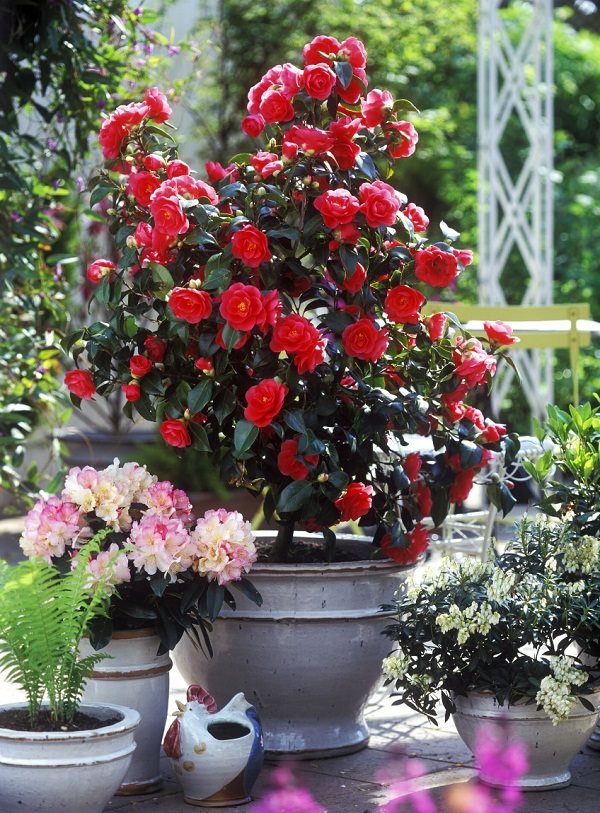
44 Best Shrubs for Containers Best Container Gardening Plants Balcony Garden Web
Camellia, a stunningly ornamental flower shrub, is perfectly suited to growing in pots.Picture it on your terrace or balcony! Key Container Camellia facts:. Name: Camellia Family: Theaceae Type: flower shrub. Height in pot: 3 to 10 ft (1 to 3 m) Exposure: part shade to full shade Substratum: heath soil. Foliage: evergreen - Flowering: November to June, variety-dependent
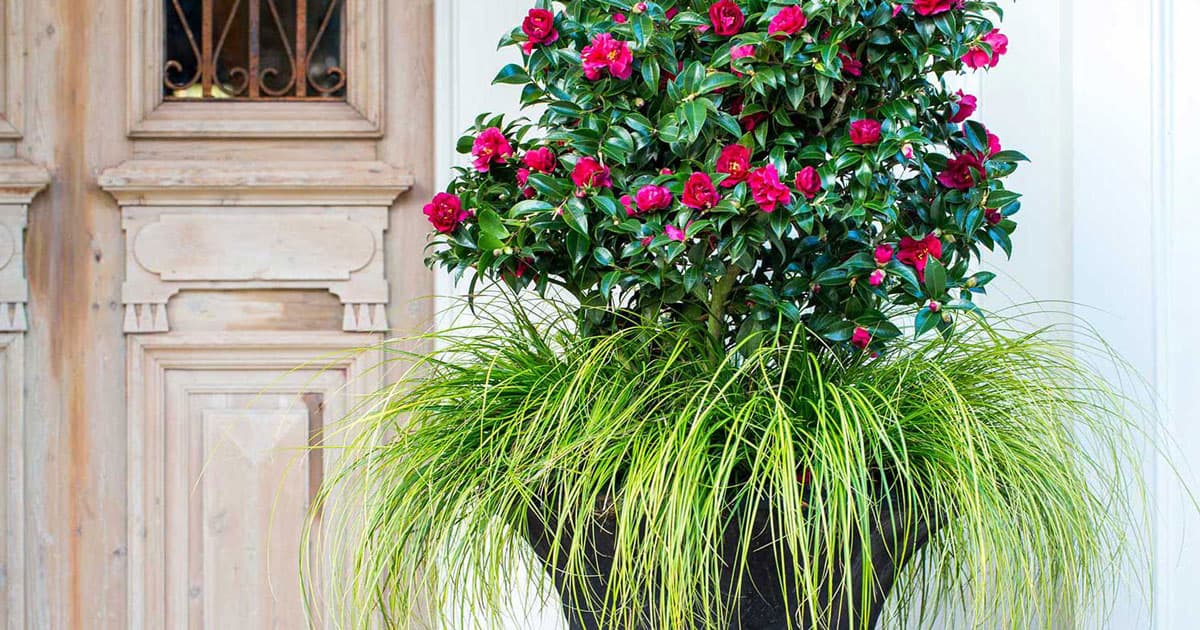
7 Steps to Stunning ContainerGrown Camellias
6. Plant Upkeep. Container-grown camellias dry out faster than those planted in the ground. Be sure to water containers deeply when the upper 2- to 3-inches of soil feel dry to the touch. Allow containers to drain thoroughly. Avoid pruning camellias during the growing season when buds are forming.

Camellia Japonica Seeds Bakker Container flowers, Flower pots, Flower garden design
The container needs to be at least 11in (30cm) in diameter and deep enough so the top of the plant's root ball sits at least 2in (5cm) below the rim. Camellias are slow growing, so will only need repotting every two or three years but it's worth checking the base of the pots for protruding roots regularly. Refresh the compost annually in.
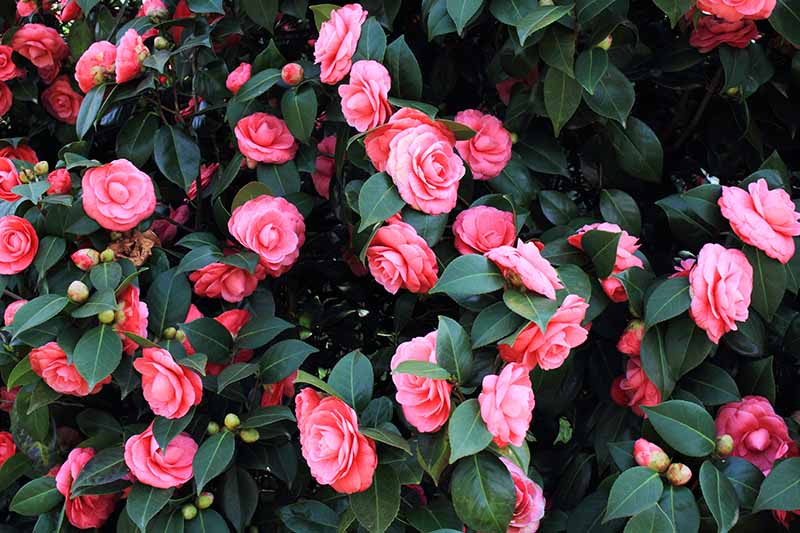
Tips for Growing Camellias in Containers Gardener’s Path
Camellias do best in durable plastic or glazed ceramic pots, as these materials tend to hold in moisture. Avoid planting camellias in terracotta pots. They dry out too quickly. If you are going to plant in a wooden container, seal it prior to planting to preserve moisture. Make sure whatever container you choose has drainage holes.

GAP Gardens Camellia japonica 'Leonard Messel' in container in spring Image No 0017273
If you are growing camellia in a container and you live in a cooler climate, protect the soil and root system from freezing. Dry leaves and pine straw are an excellent source of insulation; mound them up and around the container, fully covering the container and soil. If you live in a colder climate, such as zone 7 or lower, keep the pot.

Tips for Growing Camellias in Containers Gardener’s Path
Sterilize the plant pot by scrubbing it well with soap and water, and soaking it for thirty minutes to an hour in a solution of nine parts water to one part bleach. Thoroughly rinse the solution off of the pot before repotting the plant. Repot your plant with fresh soil, and trim away any affected foliage.
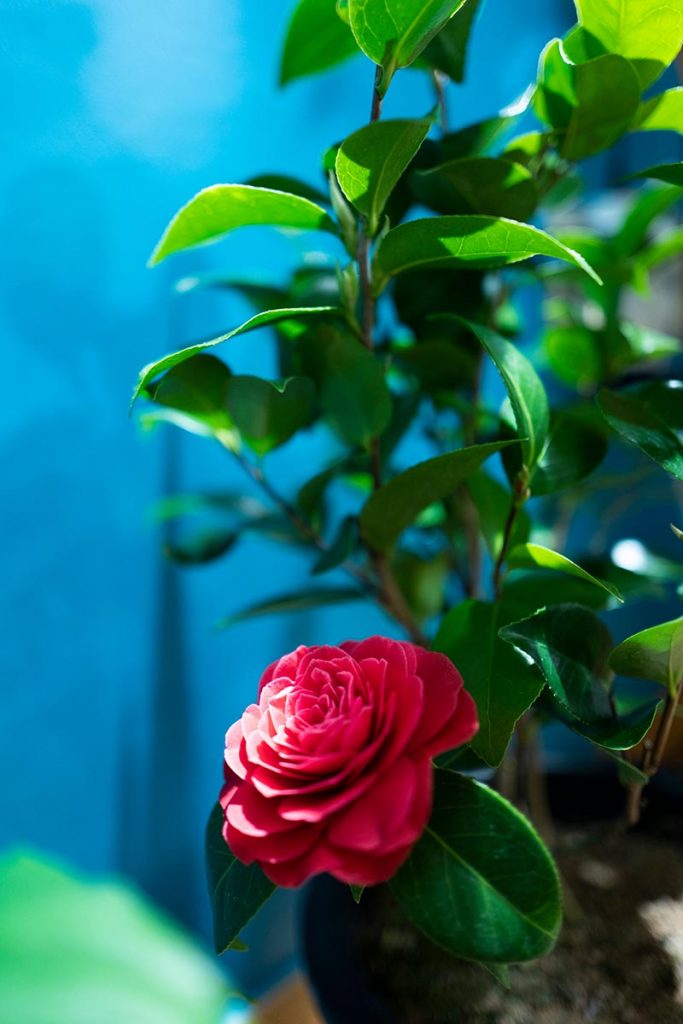
Tips for Growing Camellias in Containers Gardener’s Path
Growing Tips. Avoid cultivars that grow very large, and choose one that has a more compact growth habit. Choose a container that is sturdy, has good drainage, and doesn't hold too much moisture. Don't leave camellias in harsh, full sunlight - place in partial shade or dappled sun.

How To Grow Camellias in Pots Camellia Plant Care in Containers YouTube
Step 3. Pour a small amount of your soil mixture in the bottom of the container. Set your Camellia in the container and make necessary adjustments by adding or removing some soil so that the top edge of the root ball will sit 1" below the rim of the container. Step 4.
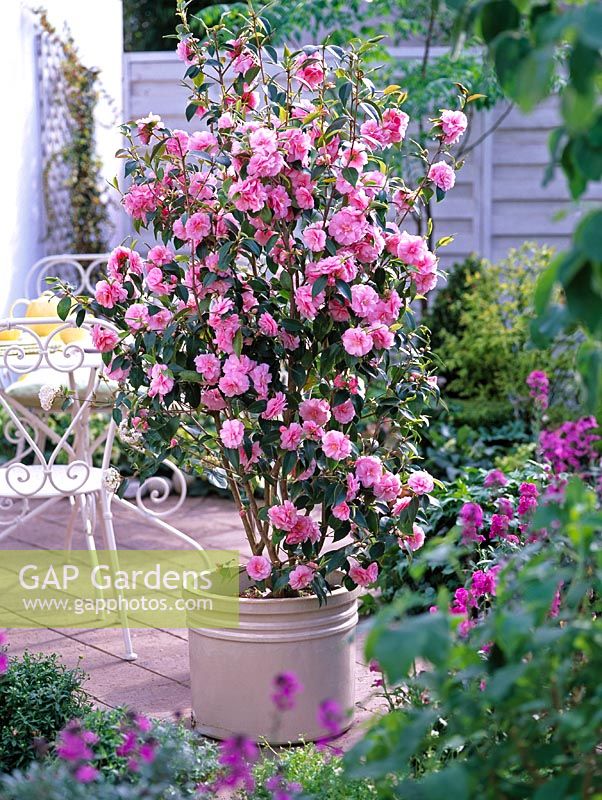
GAP Gardens Camellia 'Spring Festival' in container Image No 0080054 Photo by Friedrich
5) Care For Your Potted Camellia. Place pots (for most camellia varieties) in partial or dappled shade. Avoid placing your camellia in containers in windy locations or spots that get early morning sun. Water regularly and well, but always ensure that excess water can drain away freely. Watering with rainwater is always best and avoiding tap.

How to grow plants in large pots long term GardenDrum
Thrives in part shade. Camellia sasanqua will thrive in full sun once the roots have established. An ericaceous plant, so requires an acid soil. Prune after flowering if needed. Keep well-watered through the summer - this is when the plants produce next year's flower buds. Feed in spring with an ericaceous fertiliser. Grows well in containers.
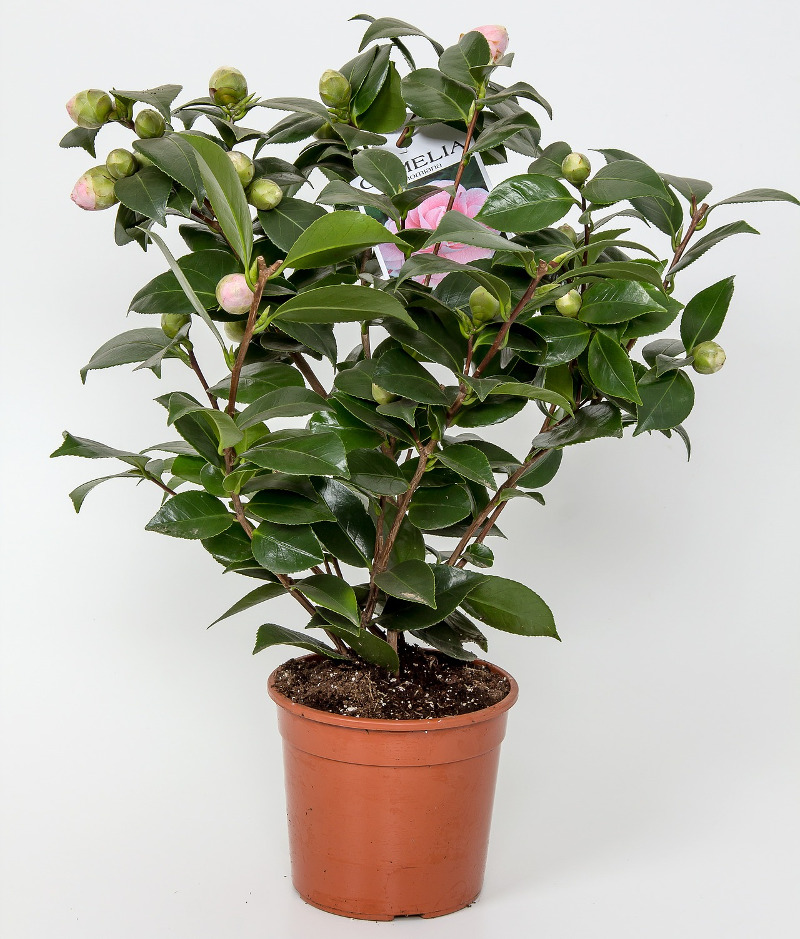
Growing Camellias in Pots Plant Addicts
Learn how to flower camellias in containers. Byron Martin, Logee's owner, discusses proper care including light requirements, watering, fertilizing and how t.